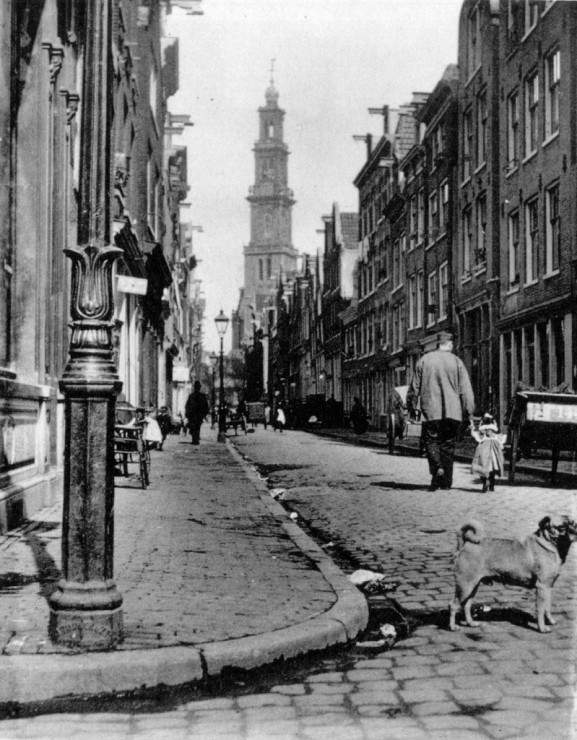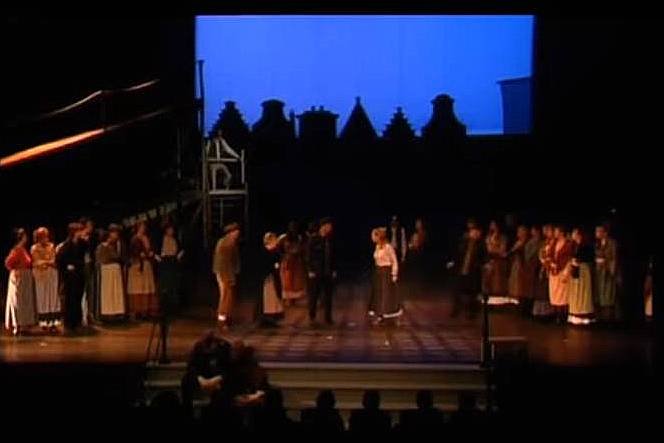Eppo’s photo gallery “Lights of Amsterdam” is a good occasion to remind us the inhabitants of the Jordaan district of Amsterdam in a nice WW II story. At the war time the area was inhabited by “lower” class working people and Jews, poor and just wanting (almost always) a bit of fun.
Jordaan 1902 / photo: Wikimedia Commons
During WWII the Dutch were rather depressed as it seemed the Germans would be ruling all of Europe. They thought so until early 1943, but then there was the lost battle of Stalingrad! Hope returned and the people in this part of Amsterdam said: “enough is enough”. But their home streets remained dark, wet and cold as there was no electricity, fuel, etc. So they missed very much the togetherness and the little lights in their streets in the evening. Suddenly a song appeared in their streets called: “when the little lights return … to the Leidse plein”. That was the signal that had a strong effect , it was to the Dutch a loved signal of hope. Also it signaled the beginning of the big strikes. Public transport and other services, did no longer function until liberation day.
Here are some versions of that simple but famous song:
Willy Walden (1943), Manke Nelis & Johnny Meyer (1960), and Willeke Alberti (1980).
After the war, in the 50’s, the culture of the Jordan revived with songs like:
* The “anthem” of the Jordaan, by “Johnny Jordaan“.
* Lovesong to (the channels of) Amsterdam in the 50-ties by “Auntie Leen“.
In the 60s, the atmosphere in the songs became more melancholic:
* So was the song Amsterdam weeps (1964, about the missing Jews) very popular. It was sung by Black Riek (Hendrika Elisabeth Jansen) , “The Princess of the Jordan”.
* Two years later, in 1966, Samses Shaffy made the song Sammy populair (is a lovely song for a depressed Jew). (Ramses’ train to the north, a goodbye to his sick mother).
In the later 60s prosperity in the Netherlands grew rapidly and the houses in the center of Amsterdam became too expensive for the local people. They therefore moved to new (affordable) homes in new neighborhoods in the new places, in the new province of Flevoland. Against so much renovation the old culture of the Jordan was not resistant. Which faded away. Although … maybe that spirit sleeps simply a little bit becouse:
* A comedy, De Jantjes (the Johnnies), from the 20’s on the Jordan was about 80 years later, a resounding success! It was then only not called a “comedy” but a “musical” .
* The yearly return of the Lovesong to the channels (by the people of Amsterdam) at the end of the Prinsengracht concert.
* When the municipality of Amsterdam wanted to cut down a tree that was old and full of days, an uprise broke out. Indeed it was the tree Anne Frank wrote about in her diary. Specialists from the Agricultural University in Wageningen were called in, tree surgery was done on the tree and from the seeds saplings were grown. So when that tree (150 years old) could not be saved, there was an appropriate successor.
Anne Frank’s horse chestnut, view from 2006 / Photo. huliana90212, Wikimedia
Han Tiggelaar
See also: Lights of Amsterdam



